Spring Home Maintenance Checklist

Contents
Because maintenance today is always cheaper than repairs tomorrow!
We will soon welcome warmer weather, and that means it's time to evaluate and inspect our properties for any signs of damage from Winter. Harsh temperatures can lead to wear and tear that we’re unaware of unless we take the time to walk our properties and seek out potential problems.
Temperatures are going to swing the other direction placing additional stress on the materials of our home. We believe putting your home on a maintenance schedule is the best way to keep track of the care and attention you're giving your property. Scheduled maintenance is a preventive measure and gives you a chance to spot small problems before they become catastrophic issues.
You might be thinking, “But where do I begin?” We can certainly understand that you might be a little overwhelmed and unsure of what to look for. We thought we would create a spring home maintenance checklist from a home inspector’s perspective, to help you out. Let’s get right to it.
Examine Doors, Windows, and Screens

Take a long hard look at all of the entry points of your home including the doors, windows, and screens. Examine the seals around your doors to ensure all the weather stripping is in place, and there isn’t any escaping air flow. You can repair any sealant issues with repair kits and additional weather stripping.
You'll also want to evaluate your windows both inside and outside. Windows have a way of inviting unwanted water inside your home, which can wreak havoc on your casings and lead to wood rot. If you see any moisture inside, you will want to figure out where the water is coming from and repair and replace anything that has been damaged. Failing to do this kind of maintenance can be detrimental to the window structure and could result in mold and mildew in your interior spaces.
You may also want to inspect your screen doors and windows to ensure that there are no tears or holes in the structures. You can find repair kits at most home improvement stores, so you don't have to worry about mysterious insects getting into your home.
Driveways and Walkways

One of the features most impacted on your property during cold Winter months is your driveways and walkways. Whether you are dealing with concrete or asphalt, cold temperatures tend to make the materials contract. When the weather thaws a bit, those materials will expand placing all kinds of pressure on the concrete or asphalt. A simple walk around your property should be enough to identify any issues.
For those with asphalt, any blemishes or trouble spots can usually be patched and repaired. For those with concrete, the severity of the problem will depend on whether or not a patch will work. More times than not, concrete needs to be ripped out and replaced.
Evaluate Your Roof

This job can get a little tricky depending on what might be going on with your roof. You can examine the roof using binoculars and cameras that can maybe identify any apparent issues. Depending on how old your roof is, if you see no obvious issues, your roof is probably in good shape to withstand the hot Summer days ahead.
If you do notice problems from a quick observation, you will want to have your roof inspected to learn how extensive the damage might be. You can hire a home inspector to walk your roof or a contractor with experience to evaluate what may need repairing. As Spring approaches, and we anticipate heavy rains, now is the time to discover any issues that could prove disastrous later.
Inspect for Insects
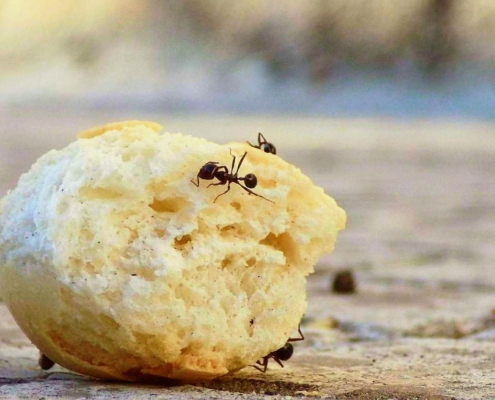
As we come out of our Winter cocoons, so will the insects and pests. The best defense for insect issues is not to let them get a head start on overrunning your home. If you have ever dealt with those tiny little fruit flies in your kitchen, you know exactly what we mean. Walk your property and look for any evidence of insect damage or occupancy. This will give you a good sense of what's to come for those returning pests that will likely return to the same place this year.
Starting in March, you'll want to keep an eye out for termites since this is when they tend to make an appearance. Observe where they fly and identify any areas they may be entering your home, so you can alert your termite specialist.
Exterior Washdown
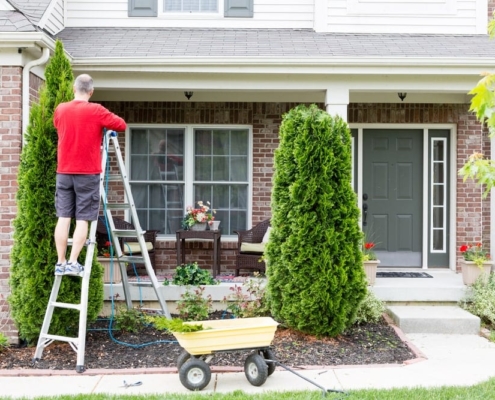
After a long winter, chances are the exterior of your home could use a bit of a scrub down. This includes any brick, siding, windows, shutters and deck spaces. The easiest way to do this is with a pressure washer. You can tackle hard to reach areas far easier and use different adapters for various exterior finishes. Not only will this make your house look great from the curb, but will alert you to issues that you might not otherwise know are present. For example, you might not know a window casing is wearing down until you see water pooling around your window from the outside.
If you do not have a pressure washer, most major home improvement stores will let you rent them for half or full days. Just be mindful in how you're using this piece of equipment, it can be incredibly powerful and can strip away caulk, paint, and similar sealants.
Prepare to Paint
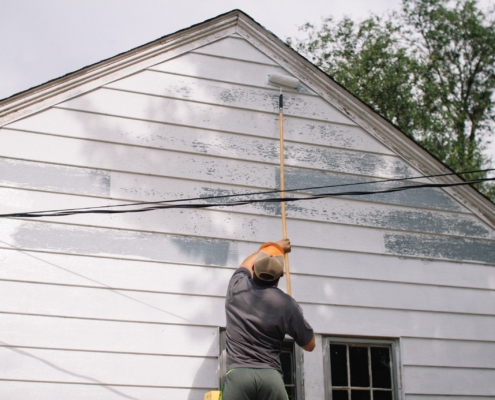
If this is the year to repaint your home, now is a good time to prep your home for exterior paint. Paint not only makes your house look new but acts as a protectant against temperature and weather. If you have to have your paint colors approved by your homeowner's association, you can start working on that approval now, so you're ready to paint sometime in the spring. This will also give you enough time to find a qualified paint professional so you get exactly what you are looking for. We also suggest repairing any damage before you paint which you can do yourself or with the help of a handyman or contractor.
Clean Gutters and Downspouts
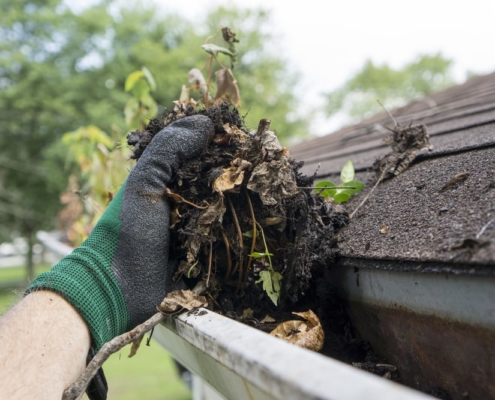
It's time to grab the ladder and start cleaning out those gutters. Unfortunately, gutters attract all kinds of debris over the fall and winter. Before Spring rain hits hard, remove the debris from the gutters, so you do not end up having water back up in your eaves or foundation. Examine your downspouts to ensure that they are redirecting water away from your property, and make sure that they are free from damage as Winter can sometimes poke holes in these structures.
Fireplace and Chimneys
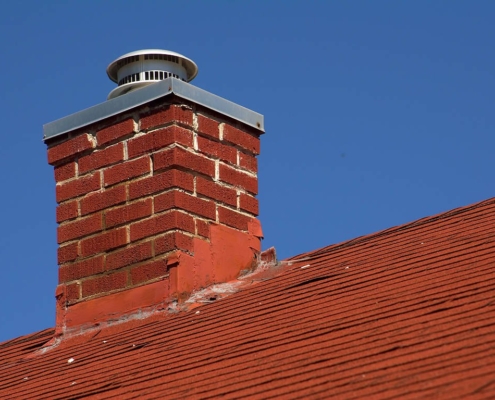
If you used your wood burning fireplace this Winter, now would be a good time to remove all of the charred logs and ash from the hearth. You may want to cover the surrounding area with a tarp to avoid ash from ruining the carpet and other surrounding flooring. Consider wearing gloves, protective glasses, and maybe even a mask over your nose and mouth since the ash is so lightweight and travels.
When it comes to your chimney, you will want to contact a professional to have it swept out. This job is somewhat dangerous, so you’ll want to work with someone who has the experience and equipment to handle this kind of maintenance.
Sprinklers and Irrigation Systems
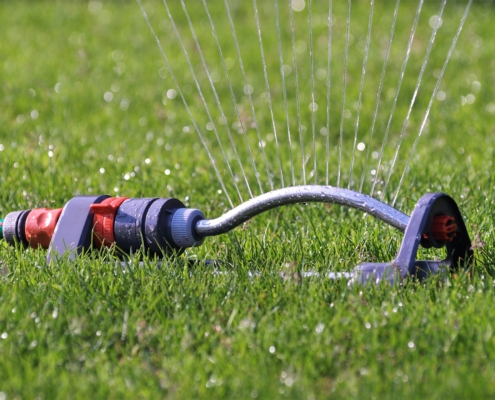
Your sprinkler system is susceptible to outdoor elements, so inspecting them before you need them will ensure your new landscaping doesn’t go thirsty. Turn each sprinkler on and observe where they are spraying and if they are functioning correctly. You can adjust any sprinkler heads that are spraying your house or the street which should help you prevent unwanted moisture and save you money on your water bill.
When you test your irrigation system, you'll be able to identify any pressure issues which may be a result of broken or burst pipes. If you’re unsure on how to maintain your irrigation system, use a professional service. These companies are knowledgeable and will help you prevent unwanted damage that can cost you a lot of money later.
Evaluate The Woodwork
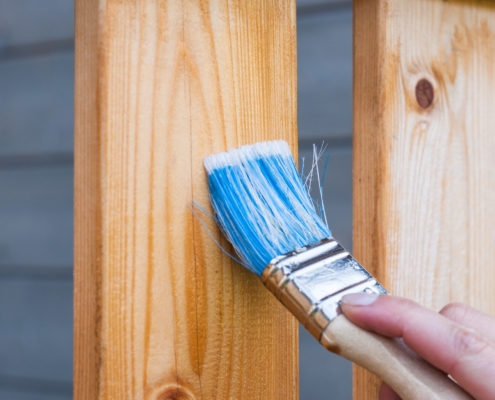
Chances are, you have all kinds of wood-work around your home that requires some sort of maintenance or care. Evaluate your fencing, decks, and exterior wood features for any damage and needed repairs. While wood is still one of the most superior materials to build with, it still requires a good bit of care and regular maintenance. You will want to look for things like wood rot and consider if new stains or sealants are needed.
If you plan to restain your deck this year, we suggest prepping your deck by using a power washer to get rid of dirt and environmental elements before slapping on your stain. Any areas with wood rot will want to be examined for the cause, and then removed and replaced as needed.
Schedule Your Air Conditioning System Check
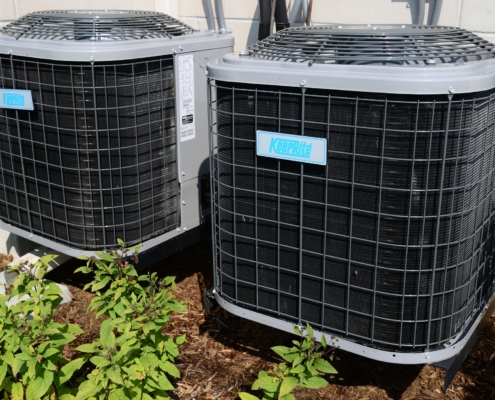
It never fails, your air conditioning unit will decide to stop working on the hottest day of the year. To avoid that catastrophe, schedule your air conditioning system check in the Spring to ensure it is working properly and will do so when it's most needed. The truth is, most people will wait until they have a problem which will place you in line for repairs. Don’t wait for that day to come, get your system checked out early and avoid the stress and panic that your neighbors might go through.
Inspect Your Vents
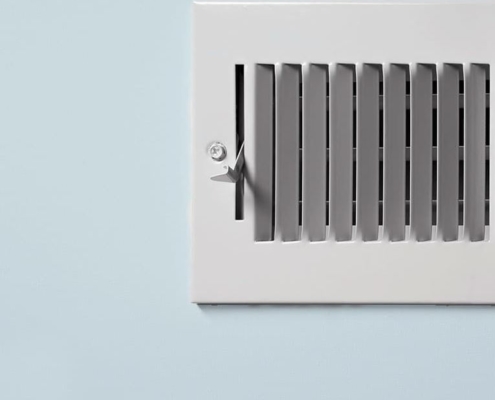
Now would be a good time to check your vents and eaves to see if any critters have decided to make a home in those spaces. These areas can also get clogged up with debris over the Winter, so they should be cleaned out to make sure that they are free for air flow out of your home. You'll also want to check your dryer vent and clean it out so your dryer works more efficiently and is not a fire hazard.
Check Out Your Attic
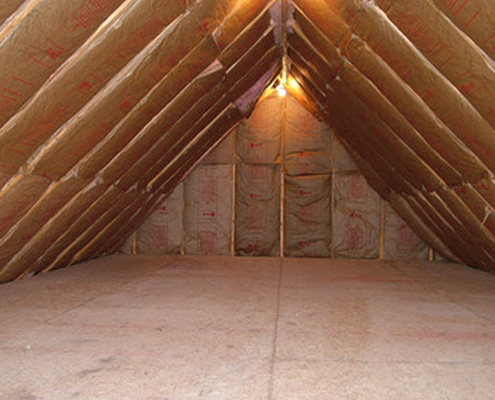
Take a walk around your attic space and look for any water damage or signs of birds, squirrels, and insects. Attics are a quiet, unassuming place for animals to hide out during the Winter. Insects, on the other hand, will start making preparations to call your attic, home. If you see signs of animals or insects, you should have a professional come to remove and clean up the space professionally. Animals can leave behind bacterias that you do not want to handle or subject your lungs to. Insects, more interestingly, have memories buried into the DNA. If they see any signs of their former insect family, they will rebuild their home within yours. Professionals are worth their weight in these situations, so don’t hesitate to work with them to ensure the job is done the right way.
Your Hot Water Heater

When hot water heaters fail, not only do they leave you in a lurch, but they also leave a hole in your wallet if they need to be replaced. As routine Spring maintenance, include inspecting your hot water heater to identify any mineral build-up and rust. You’ll want to examine the TPR valve and anode rod, as well and drain the unit so the soot and minerals do eat away at your heater or impact its function or efficiency.
If this sounds like a big job, you would be right. You can always hire a professional to handle this for you if you are afraid of getting it wrong. There are plenty of resources online to help you maintain your hot water heater, so don't pay for it until you investigate and research how you can do it yourself if you need to save money.
We hope this Spring maintenance checklist serves as a reminder at how important it is to maintain and repair your home regularly. Doing these tasks now, which we know are not always fun, will go a long way in protecting your investment. Maintenance today will always be cheaper than replacing something tomorrow. Let us know if we can help with any inspections of structures to help you maintain the integrity and beauty of your property.